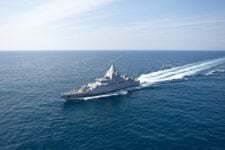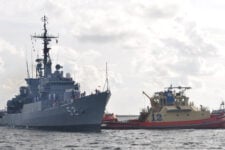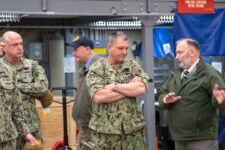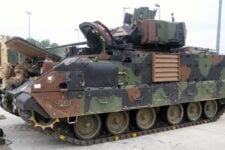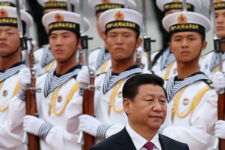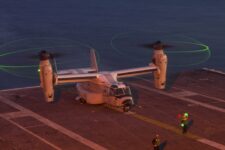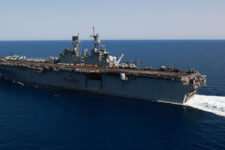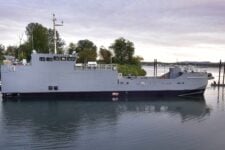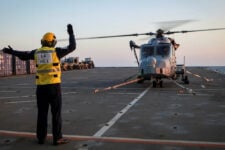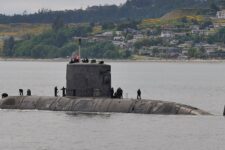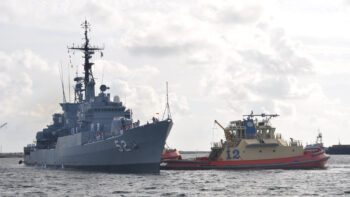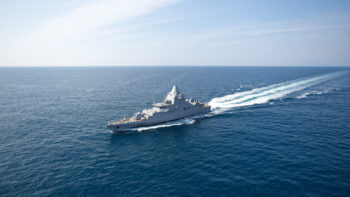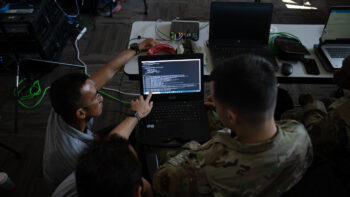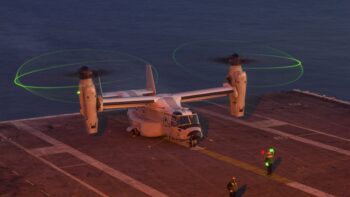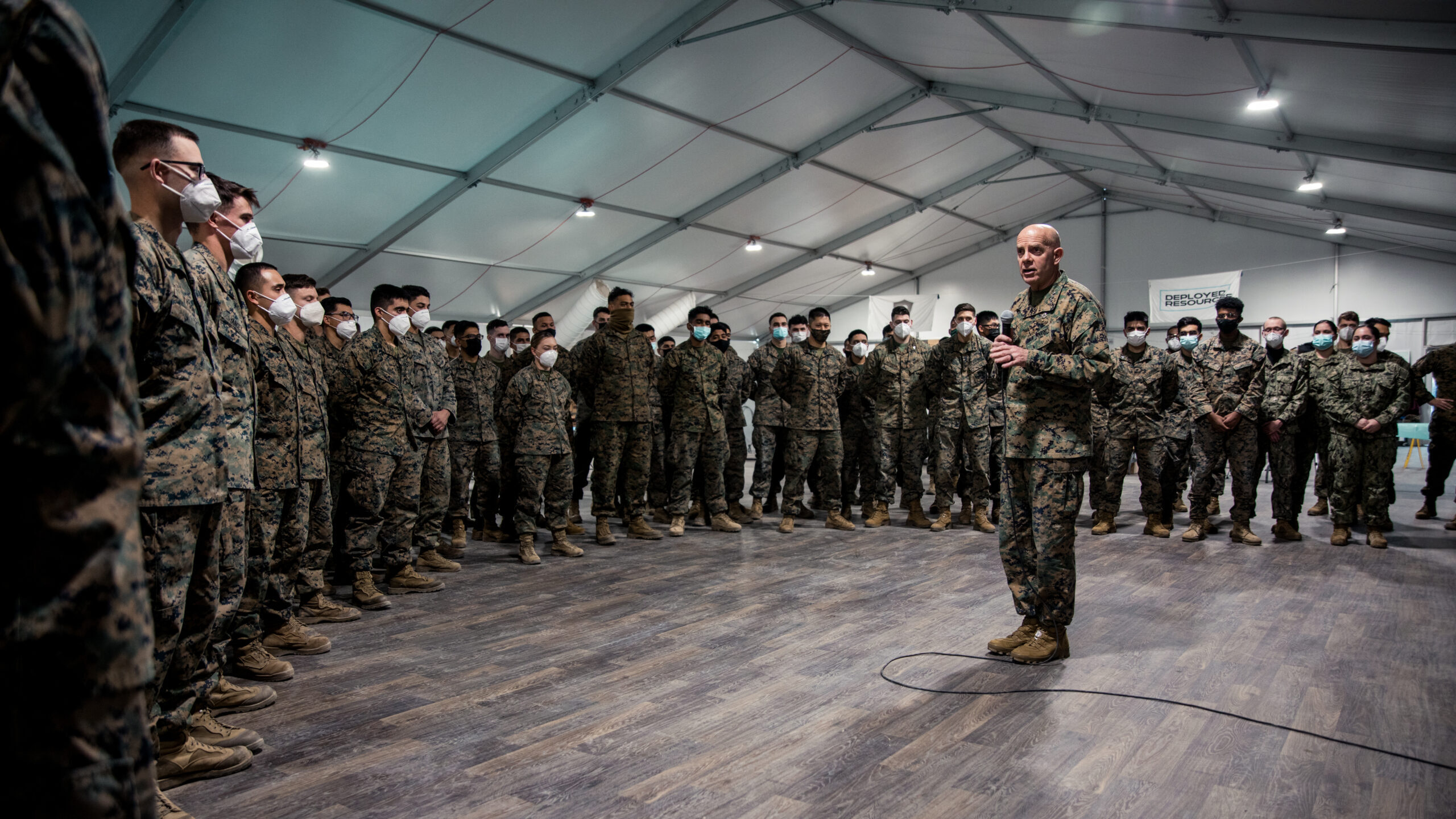
Gen. David H. Berger, commandant of the Marine Corps, addresses Marines and sailors at Fort Pickett, Va. (U.S. Marine Corps/Lance Cpl. David Intriago)
WASHINGTON: Marine Corps Commandant Gen. David Berger today reiterated his call for the US to pursue a strategy of “deterrence by detection” given the ongoing tensions at the border between Russia and Ukraine.
Berger has previously floated that concept in the context of the South China Sea. The idea, the top Marine says, is that by convincing an adversary that every small aggressive action they take will be spotlighted on the world stage, the US can deter unwanted activities.
While speaking at the NDIA’s Expeditionary Warfare conference, Berger noted it was difficult to use the Russia-Ukraine conflict as a case study because the events are ongoing. But he said the Pentagon must be postured to highlight every action Russia takes as it continues “setting the theater.”
“We have to have the capability to illuminate that,” Berger said. “Some portion of that is so that we can understand how they’re setting their pieces for battle. And part of it, frankly, is to bring it to international attention and expose it for what it is.”
RELATED: The Russian military build up near Ukraine is happening at sea too
“They can’t move, they can’t take a step without the world knowing about it,” he added.
To some extent, the Biden administration appears to have taken up the concept, if not the name, in its approach to the last two months. Since the crisis began, the White House and the Pentagon have publicly called out Russian military activities on numerous occasions. While Berger’s description of the strategy focuses more on formal statements and intelligence sharing between allies, there have also been a steady stream of leaks coming out of the White House, including usually-close-held intelligence assessments, about ways the Russians might set the stage for an invasion.
In the pacific, where Berger has previously held up this concept, the actions being called out usually amount to Chinese coast guardsmen or maritime militia harassing local fishermen in international waters. (US Navy warships are also routinely accosted when transiting the South China Sea, but are far more capable of ignoring the aggression.) Those actions, dubbed “gray zone activities” below the level of armed conflict, have been a persistent problem for the Pentagon in recent years as military leaders struggle to react without escalating a situation.
“No single element of detection or form of deterrence wins the whole [war], but … we should pursue deterrence by detection so that nefarious action [has] a giant Maglite shining on it,” Berger said.
The build-up of Russian land forces near Ukraine has captivated the world’s attention for the past two months with some reports suggesting Russia has staged upwards of 80 Battalion Tactical Groups near the border. A Russian BTG usually numbers about 800 personnel.
But researchers at the Center for Strategic and International Studies last week said they had discovered more subtle changes to the country’s posture, finding Russia had slightly increased its naval presence in the Black Sea, a body of water with a contentious history and strategic implications for any conflict in the region.
Reports also emerged today that six Russian amphibious landing ships are en route from the Mediterranean to the Black Sea.
With back-to-back deals in Peru, South Korea defense industry expands South American foothold
A new shipbuilding deal could be a test case that, if successful, could lead for years more work and millions more in deals for Seoul, in Peru and South America.
